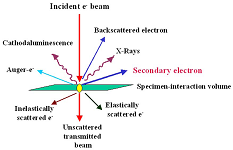
Asia Pacific Academy of Science Pte. Ltd. (APACSCI) specializes in international journal publishing. APACSCI adopts the open access publishing model and provides an important communication bridge for academic groups whose interest fields include engineering, technology, medicine, computer, mathematics, agriculture and forestry, and environment.

Determination of 16 polycyclic aromatic hydrocarbons in shellfish by HPLC-VWD/FLD
Vol 3, Issue 1, 2022
Download PDF
Abstract
A method has been developed to analyze 16 polycyclic aromatic hydrocarbons (PAHs) in shellfish samples. The procedure involves ultrasonic extraction, separation using florisil and MIP-PAHs columns, concentration through vacuum evaporation and nitrogen blowing, and detection via HPLC-VWD/FLD. The pre-treatment method was optimized, and at spiked levels of 0.5, 1.5, and 2 μg/kg, the average recoveries of the 16 PAHs ranged from 58.1% to 89.6%, 60.6% to 88.1%, and 72.3% to 98.0%, with relative standard deviations (RSDs) of 0.23% to 11%, 1.3% to 13%, and 1.5% to 14%, respectively, in Mytilus coruscus. The detection limit for the PAHs was 0.5 μg/kg. This method was also applied to analyze 16 PAHs in Ostrea gigas, Meretrix meretrix, and Sinonovacula constricta.
Keywords
References
- Purcaro G, Moret S, Conte LS. Overview on polycyclic aromatic hydrocarbons: Occurrence, legislation and innovative determination in foods. Talanta. 2013; 105: 292-305. doi: 10.1016/j.talanta.2012.10.041
- Wan YW, Huang XR, Chen X Y. Simultaneous determination of 16 PAHs in aquatic products by QuEChERS/ high performance liquid chromatography (Chinese). J Nat Sci Hunan Normal Univ., 2014; 37(1): 42-47.
- Ferey L, Delaunay N, Rutledge DN, et al. Use of response surface methodology to optimize the simultaneous separation of eight polycyclic aromatic hydrocarbons by capillary zone electrophoresis with laser-induced fluorescence detection. Journal of Chromatography A. 2013; 1302: 181-190. doi: 10.1016/j.chroma.2013.06.027
- Li LL, Hong B, Yang X, et al. Study on pre-treatment methods for determination of sixteen PAHs in aquatic products (Chinese). Chin J Anal Lab. 2016; 35(4): 482-486. doi: 10.13595/j.cnki.issn1000-0720.2016.0112
- Sun RX, Ke CL, Lin Q. Determination of Polycyclic Aromatic Hydrocarbons (PAHs) in Marine Organisms by Ultrasonic Extraction and Gas Chromatography-Mass Spectrometry. J. Instrum. Anal. 2013; 32(1): 57-63.
- Kang CX, Song YD, Zhu JX. Comparison of determination on four polycyclic aromatic hydrocarbons in edible oils by HPLC and GC-MS/MS method. Food Sci.Technol. 2018; (3): 294-299.
- Serpe FP, Esposito M, Gallo P, et al. Optimisation and validation of an HPLC method for determination of polycyclic aromatic hydrocarbons (PAHs) in mussels. Food Chemistry. 2010; 122(3): 920-925. doi: 10.1016/j.foodchem.2010.03.062
- Husseini ME, Makkouk R, Rabaa A, et al. Determination of Polycyclic Aromatic Hydrocarbons (PAH4) in the Traditional Lebanese Grilled Chicken: Implementation of New, Rapid and Economic Analysis Method. Food Anal Meth. 2018; 11: 201-214. doi: 10.1007/s12161-017-0990-3
- Zhang H, Xue M, Dai Z. Determination of polycyclic aromatic hydrocarbons in aquatic products by HPLC- fluorescence. Journal of Food Composition and Analysis. 2010; 23(5): 469-474. doi: 10.1016/j.jfca.2009.12.016
- Wang W. Research of the Purification Method in the Determination of PolyAromatic Hydrocarbons. Arid Environm Monitor. 2009; (4): 200.
- Song X, Li J, Xu S, et al. Determination of 16 polycyclic aromatic hydrocarbons in seawater using molecularly imprinted solid-phase extraction coupled with gas chromatography-mass spectrometry. Talanta. 2012; 99: 75-82. doi: 10.1016/j.talanta.2012.04.065
- Li C, Zhang XN, Shi YL. Determination of polycyclic aromatic hydrocarbons in sludge by molecular imprinting solid phase extraction and gas chromatography/mass spectrometry. Environ Chem. 2017; 36(1): 190-197.
- Guo MM, Wu HY, Yang F. Determination of 16 polycyclic aromatic hydrocarbons in fishery products by improved QuEChERS-high performance liquid chromatography. Environ Chem. 2013; (6): 1025-1031.
- Deng XY, Zhang DH, Li G. Optimization of sample pretreatment for determination of PAHs in environment water by gas chromatography. Chin. J. Anal. Lab. 2015; (5): 525-528.
- Wang C, Peng T, Lv YB. Optimization of liquid chromatography method for detection of 16 polycyclic aromatic hydrocarbons in environmental water. Environ Chem. 2014; 33(1): 62-68.
Supporting Agencies
Copyright (c) 2022 Dandan Yang, Feng Han, Yongfu Shi, Xuanyun Huang, Dongmei Huang, Youqiong Cai

This work is licensed under a Creative Commons Attribution 4.0 International License.

This site is licensed under a Creative Commons Attribution 4.0 International License (CC BY 4.0).
1.jpg)
Prof. Sivanesan Subramanian
Anna University, India





.jpg)
